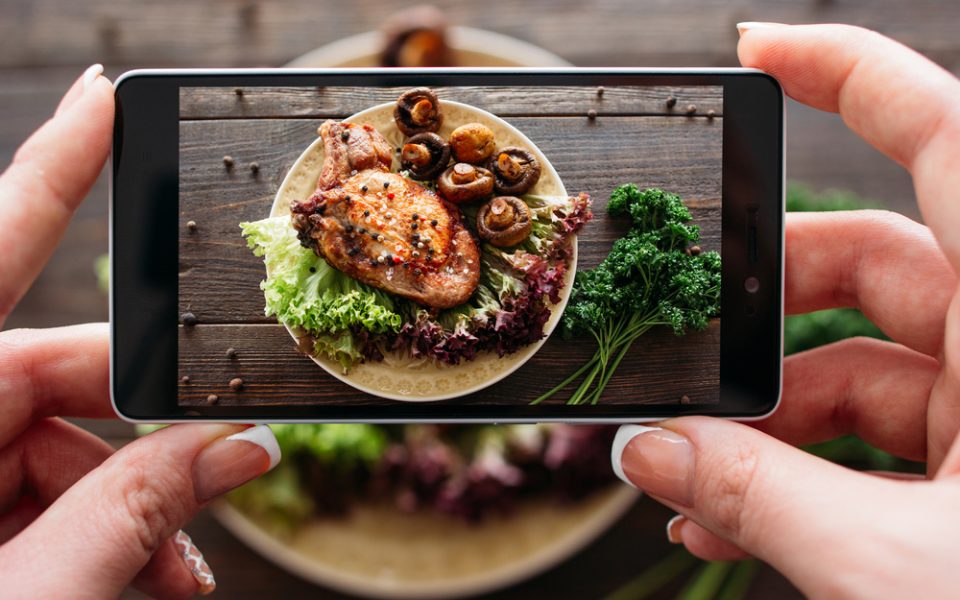
A restaurant is a creative endeavor with a lot of moving parts. It is easy to get caught up in menu ideation, interior design, staffing and forget about the nuts and bolts of the operation. A website is not a part of the window dressing. It’s literally a window into the whole enterprise.
A great deal of independent restaurants in the Triad use Facebook as if it’s a substitute for a website. Facebook is not a website. Instagram is not a website. Technically, both are websites, as they can be accessed via web browser, but in actuality they are not the same as a standalone site with a custom URL. It matters for legitimacy, for direct access to customers, for data analysis, for search engine optimization (the thing that makes your establishment pop up first in search engines) and, of course, a place for your customers to find out information about you.
A restaurant without a website landing page neglects everyone who is not on social media — believe it or not, most people don’t look at Facebook every day — and a key outlet for potential customers to receive content, especially the most important pieces of the puzzle: the menu and hours of operation.
A large part of my job as a restaurant writer and food professional is to seek out, research and amplify restaurant endeavors — online, in print, on the street, at events. I know that many restaurants change their menu seasonally, monthly and sometimes even daily. As a person with a limited budget, who lives with life-threatening food allergies and who will walk 500 miles for a bowl of steamed mussels and crusty bread, I need to know every possible detail of a restaurant’s offerings.
Yes, social media is a good place to update some fans and followers with everyday changes, but the core of connecting with the public on a day-to-day basis outside of the dining room lies within a simple formula: HAVE A WEBSITE.
Do most business owners know that the business page they see on their social-media platforms are not the same as the ones the users see? Some users might not see your daily lunch special post until a week later. Facebook, Instagram, Twitter and other social media platforms change their algorithms all the time, often not for the business owner’s benefit.
No business can rely on social media as its only online presence, and this goes double for restaurants. Yes, it’s free (unless you’re paying them for access to your own customers). Yes, social media reaches some of your patrons, but most of them will never see your posts. Meanwhile there are real bodies out there looking for places to eat.
Ever heard of Fixin’s American Craft Eatery in High Point? I tried to eat there for two years, but I could never get a handle on the menu, or the format — was it fast-casual or sit-down tables? I never knew; they did not have a dedicated website loaded with an online menu. It closed before I ever booked a table.
Don’t get me started on Instagram. Instagram is hot right now, and while it is my personal favorite platform, too many joints miss the opportunity to provide basic information, things like city and ZIP code.
Peyton Smith, owner of Mission Pizza Napoletana, went on vacation in July, but not before posting on his social media that the restaurant would be closed during that time. But not everybody got the message. A Yelp reviewer happened to stop by the shop. He posted a review with one star, questioning whether or not the eatery was permanently closed.
Even after losing a potential customer and taking the hit on Yelp, Smith still has no regrets. But he’s just like that.
It didn’t have to be this way.
A restaurant with a dedicated website creates a static home for updates, new information and frequently asked questions. It helps diners connect to the physical place in a deeper way.
Here’s some free advice from a pro: Pay for a website URL with the restaurant’s name in it. Don’t get cute. Pay for hosting your site on an external server. Schedule social media posts using apps such as Tailwind, Hootsuite, Buffer, Social Oomph or Sprout Social. They all have dedicated websites. Look them up. Most are free and for a nominal fee, upgrade to a paid account. All allow you to manage multiple social profiles with the ability to schedule content and suggests the perfect times per day to post based on follower activity.
Simply put, there is no marketing alternative to a website that will allow you a better shot at reaching customers. If you don’t have a website, it’s as if you don’t exist. While social media is the new word of mouth, it all stems from your website, the basic way to communicate your existence. Make sure it’s a good one. Give your corner of the world wide web a chance.
Join the First Amendment Society, a membership that goes directly to funding TCB‘s newsroom.
We believe that reporting can save the world.
The TCB First Amendment Society recognizes the vital role of a free, unfettered press with a bundling of local experiences designed to build community, and unique engagements with our newsroom that will help you understand, and shape, local journalism’s critical role in uplifting the people in our cities.
All revenue goes directly into the newsroom as reporters’ salaries and freelance commissions.


Great post, Nikki. And since there are so many easy and affordable website services available, there’s no reason not to have your own site.